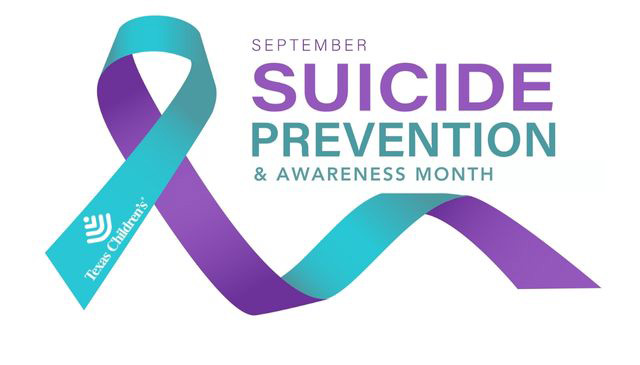
Texas Children’s is recognizing Suicide Prevention Month this September by offering new resources to support our team members who may be experiencing mental health struggles, and to empower each of us to offer the advice and encouragement that can often make all the difference in moments of crisis.
According to the Centers for Disease Control and Prevention (CDC), health care workers may be at risk for mental health issues, including the risk of suicide. Working in intensely stressful and emotional situations is common for those in the industry – and many, like the members of our One Amazing Team at Texas Children’s, are naturally more likely to place the needs of patients and families ahead of their own.
“Delivering on Texas Children’s mission for children and women is rarely easy, and the urgency and importance of our work can understandably take a toll on our hearts and minds,” Executive Vice President Dan DiPrisco said when announcing the new tools and initiatives being launched this month to provide greater mental health support to our employees.
“We hope taking on this new effort to sharpen our focus on suicide prevention will make a real difference in supporting your mental health and well-being,” DiPrisco said. “Though suicide is a leading cause of death in our country, it can be prevented and healing is possible when people are connected to the right support.”
These new suicide prevention resources and programs also advance the organization’s commitment to find more and more ways to take care of our team members and address their greatest needs.
Becoming a Zero Suicide Organization
This month marks the start of a new journey to make Texas Children’s an official “Zero Suicide Organization.” The process will fundamentally shift the organizational culture and transform how we support our people and our patients who experience mental health crises or suicidal ideation.
A dedicated team will assess the needs of our workforce, explore any gaps and determine what can be done to offer safer suicide care. For more information and/or to get involved by serving on one of the Suicide Response and Prevention Workgroup subcommittees, please email Diane Kaulen.
Suicide Prevention Gatekeeper Training for all team members
Throughout our lives, we may all face a situation where someone we know may be thinking of suicide. We want to empower and equip our team members with the resources and support needed to help those around us. As such, we’re asking you to take the Suicide Prevention Gatekeeper Training in HealthStream to learn how to recognize the signs of suicidal ideation, open communication with someone who may be suicidal, let them know their life is important, and point them toward available resources. The training is specially designed for us at Texas Children’s and the Baylor College of Medicine. While the training is strongly encouraged, if for any reason you do not feel comfortable completing it, please contact your leader.
Employee Assistance Program (EAP) Resources
Texas Children’s EAP counselors and chaplains can provide special counseling and support to team members who have lost a loved one to suicide, including ways to honor their memory and celebrate their lives. The EAP team can also provide connections to community resources with grief support groups. Visit the program online here for more information. Please click these links for additional resources available: World Suicide Prevention Month Toolkit, HelpSheet: Suicide Awareness and HelpSheet: Teen Suicide Awareness.
Dial 988 for the Suicide and Crisis Lifeline
Now active in the United States, the 988 lifeline is a newer and shorter number that people can call to reach a trained counselor during a mental health crisis, 24 hours a day, seven days a week. The lifeline connects callers to a national network of local crisis centers that provide free and confidential support to people in suicidal crisis or emotional distress. Learn more about 988 on this website from the U.S. Substance Abuse and Mental Health Services Administration.

